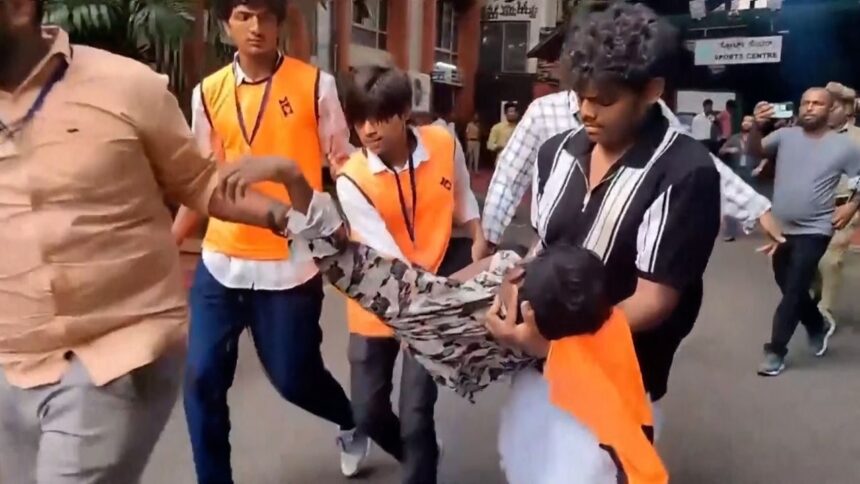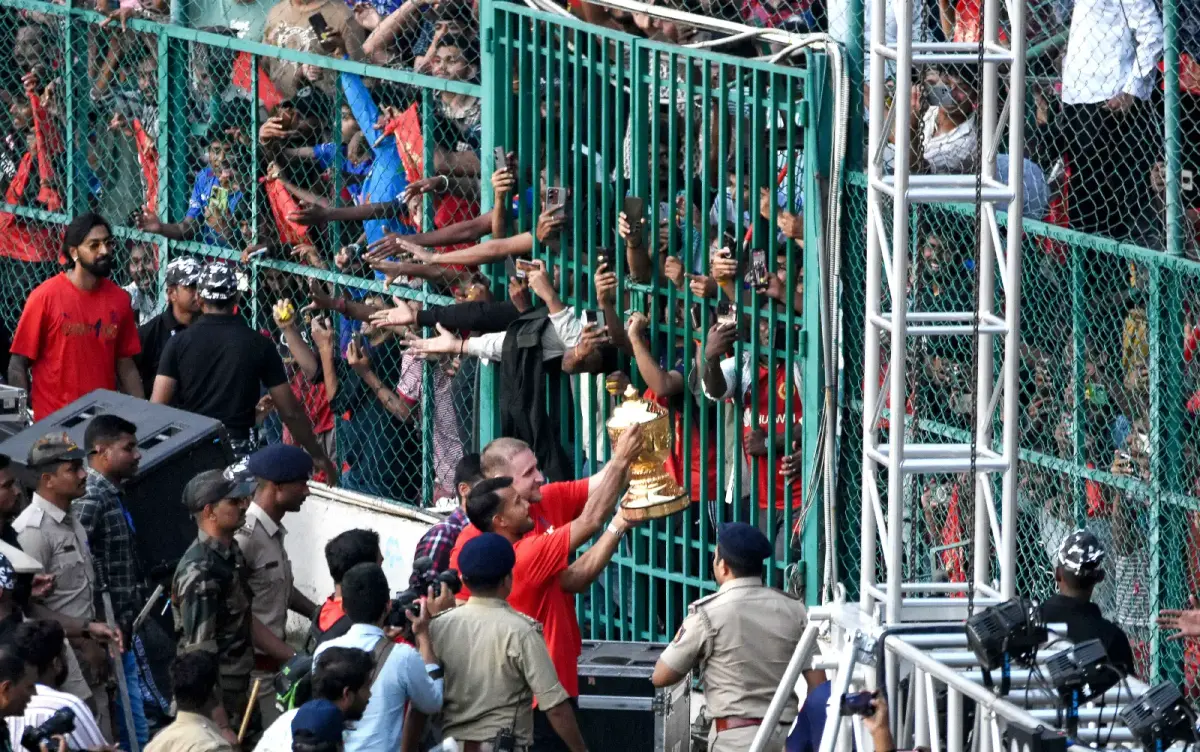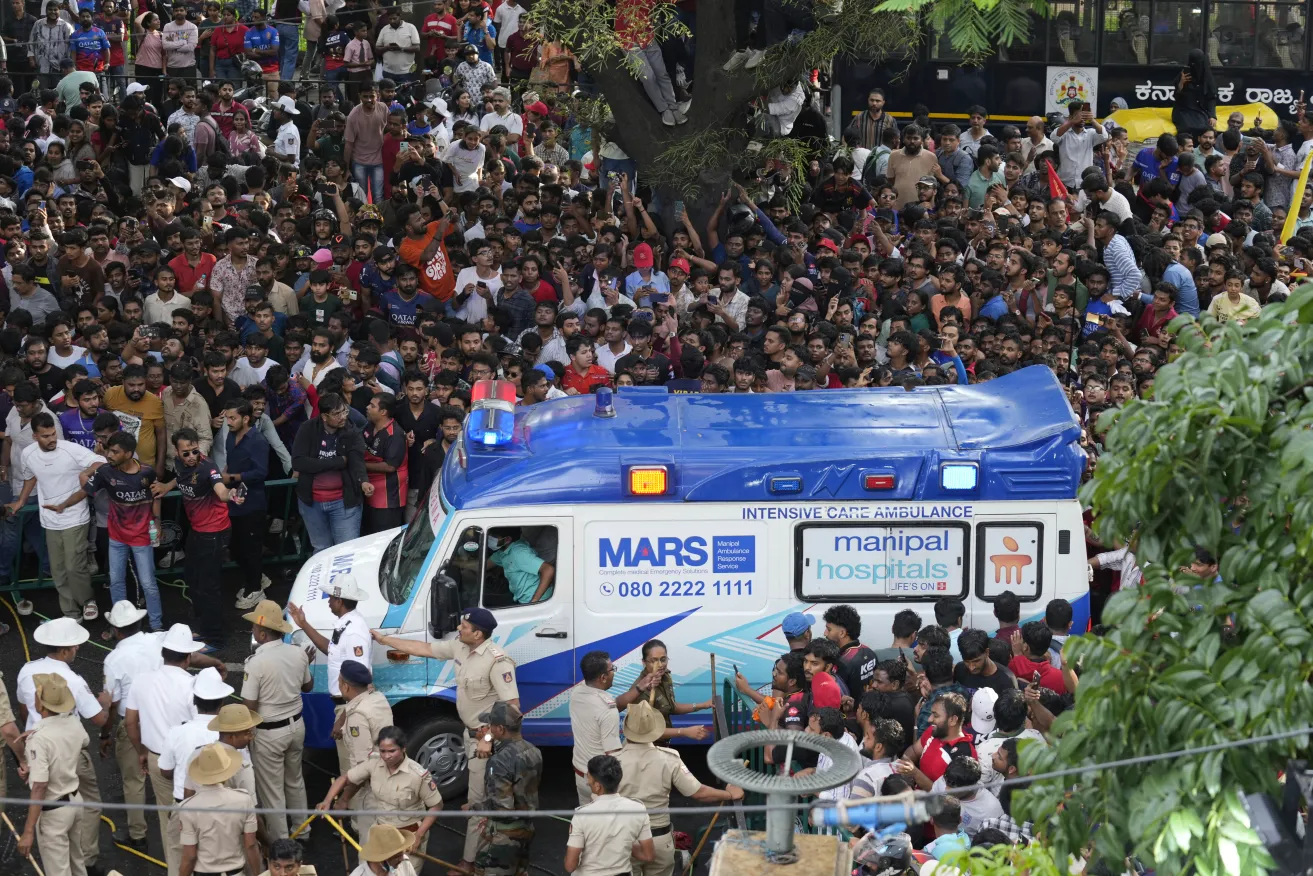BENGALURU, India — What started as a joyful night for Royal Challengers Bengaluru fans celebrating their team’s first Indian Premier League (IPL) title ended in tragedy on Wednesday, June 4, 2025. At least 11 people were killed and 47 injured after a crowd surge outside M. Chinnaswamy Stadium overwhelmed security and led to a deadly stampede.
Huge crowds gathered to mark RCB’s historic IPL victory, with many hoping to get a glimpse of their favourite players after the team’s six-run win over Punjab Kings in Ahmedabad the night before. Local officials estimated about 200,000 fans filled the streets around the stadium, which was double the number expected. Many waved team flags, sang chants, and scaled trees and stadium walls, eager to see stars like Virat Kohli.
The situation quickly turned dangerous as excitement grew. Police say the chaos began when groups of fans without tickets or passes tried to push through the stadium gates. Barriers could not hold back the surge, and some gates remained shut as people pressed forward into narrow entry points.
“There were too many people trying to fit through a small gate, even before it opened,” a police officer told Sky News. Video from the scene showed fans climbing over each other, and the ground was left littered with shoes and clothing. Emergency crews rushed the injured to ambulances, and some people received CPR on site.
Karnataka Chief Minister Siddaramaiah shared his condolences and announced Rs 10 lakh ($11,900) compensation for each victim’s family. He ordered a magisterial investigation into what went wrong. “This should have been a celebration,” he said, “but the crowd was far larger than anyone expected.”
Deputy Chief Minister D.K. Shivakumar apologized and said 5,000 officers had been deployed, but the number of fans was “uncontrollable.” The Bengaluru metro suspended service around the stadium, making access even harder.
RCB’s long-awaited win was supposed to be a proud moment after 18 IPL seasons without a title. The team, led by Rajat Patidar and boosted by Kohli’s emotional 43 runs in the final, had already been honoured at the Karnataka State Assembly earlier in the day.
Organizers had planned a public parade from the Assembly to the stadium, but cancelled it for safety reasons. The team held a brief celebration inside the stadium where Kohli addressed the crowd.
Both RCB and the Karnataka State Cricket Association released a joint statement offering condolences and support to those affected. Kohli posted on Instagram, saying he was “at a loss for words.” The Board of Control for Cricket in India (BCCI), which runs the IPL, also called the incident “unfortunate,” and BCCI president Devajit Saikia sent his sympathies to the families.
Deadly crowd surges at cricket events have happened before in India, where the sport draws huge crowds. In 1987, nine fans died in a stampede at a cricket match in Nagpur. In 1996, a fire at Kanpur’s Green Park Stadium led to panic and injuries, though there were no deaths.
More recently, 23 people died in a 2017 stampede at Mumbai’s Elphinstone Road railway station, which many cricket fans used on match days.
India’s struggles with crowd safety are not limited to cricket. Earlier in 2025, at least 30 people died during the Maha Kumbh festival after massive crowds gathered on the riverbanks.
The events in Bengaluru have led to strong criticism of the government’s crowd management efforts. Opposition leader B.Y. Vijayendra accused the authorities of focusing on publicity over safety and said they must take full responsibility.
Prime Minister Narendra Modi called the incident “absolutely heartrending,” and offered prayers for the families and a swift recovery for those injured. President Droupadi Murmu also described the loss as “shocking and heartbreaking.”
The tragedy has left a lasting mark on what should have been a night of happiness for RCB fans and the city of Bengaluru. It’s a stark reminder of how hard it can be to keep people safe during massive public events in a country where cricket is more than just a game.
Source: Sky News, India Times
















